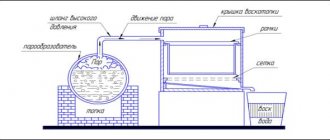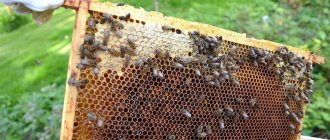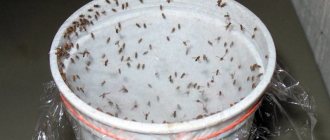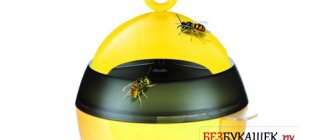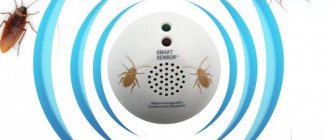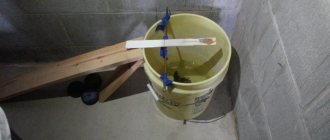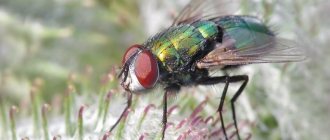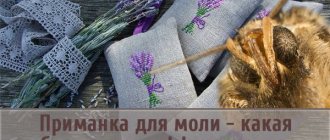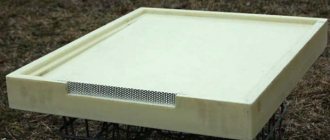- Eliminating the causes of flies
- Proven folk methods
- The most effective homemade fly traps and baits
- What can be used as bait?
The first annoying flies appear with the onset of warm spring days and accompany us until autumn. They not only bring discomfort and irritation in everyday life, but also pose a threat to the health of people and pets. The winged parasite carries dangerous viruses and infections on its legs.
Flies can cause the following diseases:
- acute diarrhea;
- conjunctivitis;
- dysentery;
- salmonellosis, tuberculosis, cholera;
- diseases caused by larvae parasitizing the human body.
The insect's lifespan is approximately one month, during which time females can lay more than 2 thousand eggs. To prevent active reproduction, you need to know the methods and means of control. Folk advice and devices made from improvised materials will help with this.
Homemade adhesive tape or Velcro for flies
This tape is effective against all types of flies, but it is especially effective against omnivorous and herbivorous species. Other winged insects, including mosquitoes and midges, stick to the tape largely because they choose it as a resting place. Knowing the preferences of flying insects to sit on ceilings and chandeliers, it is better to hang adhesive tapes in the upper part of the rooms. To make adhesive tape you will need:
- Thick paper, cut into long strips 4-6 cm wide. You need to attach a loop to one end of the strip, from which it will be convenient to hang the trap.
- Rosin – 200 ml.
- Castor oil – 100 ml.
- Turpentine – 55 g.
- Granulated sugar – 4 tbsp. l.
- Water – 4 tbsp. l.
You need to boil syrup from water and sugar, bringing it to a yellowish-brown color. When the syrup has cooled a little, add rosin, turpentine and castor oil to it, mix everything thoroughly. Then soak strips of paper with this mixture and hang traps in places where flies are most concentrated - in the kitchen and veranda, above the entrance to the house and window openings, in the toilet.
The ribbons will attract flies with their smell, as well as the opportunity to sit on a surface that is comfortable from the point of view of insects. These devices remain sticky for a long time, so they need to be changed as they become filled with insects.
The given composition of sticky bait is very effective, but if the only thing you have in your house is sugar, you can get by with sugar syrup. The main thing is to make it so thick that flies stick to it well.
Take the container with tongs, place rosin on it and start heating. Wait until the mixture boils and hold for 1-2 minutes until all the turpentine evaporates.
Add oil to boiling rosin and heat the mixture for another 30-60 seconds. Castor oil can be poured out with a syringe. Be careful not to get the oil into the fire to avoid burning your hands or causing a fire. Fat burns well.
Wait until it cools completely. After 10-20 minutes the mixture will thicken. If the proportion is chosen correctly, the glue will be moderately thick. To check the condition, take a match and dip its tip into the impregnation. When you remove the match, the thread of glue should stretch out more than 10 cm. The mixture should be plastic - the torn thread that sticks to the match should be pulled together into one drop.
Prepare paper, fastened sticks, a match for spreading and the glue itself. If you have a standard sheet of paper and not ready-made tape, cut a strip of it 10 cm wide and 30-40 cm long.
Insert the tape between the sticks fastened at the base as shown in the image. Wrap the strip around the sticks twice and tighten slightly until it is firmly in place.
Apply glue to the tape. Holding it by the sticks with one hand, spread the impregnation over the entire strip with a match. Try to keep the layer even, but don't overdo it. There is no need to cover all the paper with glue. For a 30 cm tape, 3-4 heavy drops of glue (as in the photo) are enough.
Bottle trap for flies and fruit flies
This is a closed type trap, but it will also attract insects with a sweet smell and catch them with a sticky substance. To make it, use a regular 1.5-2 liter plastic bottle of water or soda.
- The top third of the bottle needs to be cut off, and 200-300 ml of viscous sugar syrup should be poured into the bottom of the lower part. You can add a little honey, beer or fruit juice or fermented jam to the syrup. The consistency should be viscous enough so that insects quickly drown in it and are unable to escape.
- Insert the cut top part of the bottle into the bottom part with the neck down, without a cap. Fasten the two parts with a stapler or tape.
- In order for flies and flies to more actively fall into the bottle, its edges should be lightly greased with sweet syrup and placed where insects fly most often.
If you plan to place the trap outside, it is better to add a little white vinegar to it to repel honey bees and thereby protect them from death.
"Skillful hands"
When starting to make Velcro, you should not forget that flies are very mobile and do not stay in one place for a long time. This must be taken into account when choosing a high-quality adhesive base, which should reliably hold and destroy an insect that touches it even for a brief moment.
To make a trap, you need to prepare a sticky mixture that will cover the fly fly. There are a large number of different recipes, which include accessible and inexpensive ingredients. You can make an adhesive composition based on the following ingredients:
- rosin 0.2 kg, turpentine –50 g, castor oil 0.1 kg, sugar syrup or molasses – 50 g;
- rosin 0.4 kg, honey 0.1 kg, castor oil, vaseline or machine oil 200 g, glycerin 40 g;
- pine resin 300 g, linseed oil 150 g, wax 10 g, honey or sugar syrup 50 g;
- rosin 0.3 kg, linseed oil 200 g, honey 60 g.
- rosin 30g, castor oil 20g and a little honey or any jam.
Making Velcro for flies
The work of preparing the adhesive base is carried out according to the same principle - resins and rosin are melted in a water bath, brought to a boil, and then other components are added to the resulting mass.
The basic proportion of rosin and oil is 2:1. It can be adjusted to obtain the required density of the composition. The “correct” glue should stretch into a thin “thread” of 100 mm or more.
There is an even easier way to make sticky fly tape. In this case, special ALT glue is used as the main substance that attracts and retains flies. It is used to catch rodents and various insects. The composition of the drug is non-toxic and has an undeniable advantage over homemade mixtures. The glue does not dry out and retains its properties for a long time. Velcro based on it will fight flies until there is no free space left on it from insects.
I made Velcro from ALT glue. Works great.
What it is?
Fly sticky is a simple and ingenious remedy. I opened the package, hung it up and forgot, and the flies themselves will find their way to it, gathering for a special specific smell. The flytrap looks like a ribbon made of thick paper hanging from the ceiling. The product is impregnated with a sticky substance, once on which a fly cannot escape.
Velcro was invented by the German confectioner Theodor Kaiser. For many years he experimented with different syrups laid out on cardboard until he came up with the idea of cutting it into flat ribbons and rolling them into a tube. Kaiser involved his chemist friend in the process of creating the flytrap. They were able to produce a product with a sticky, fly-attracting composition that did not dry out for a long time. In 1910, the first production of Velcro was established in Germany.
Many people choose Velcro from all kinds of fly control products, as they have a lot of advantages:
- the paper with an adhesive base that makes up the flytrap is completely harmless to people;
- the product is suspended from the ceiling and is out of reach of children and animals;
- most traps contain an aroma that attracts insects, but is not captured by people, so even those who cannot stand foreign odors can use Velcro;
- fly strips have a long service life;
- The product is inexpensive and highly effective.
Flytraps can be used indoors without fear of poisoning. They also work well without running out of steam in open spaces. The only thing that can reduce the activity of the tape in outdoor conditions is the accumulation of dust; the presence of foreign particles causes the composition on the tape to lose its viscosity.
Trap for flies and midges
Small midges that appear in an apartment in the summer (and sometimes in other seasons) are usually fruit flies and wine flies. They appear in the apartment when food suitable for them appears in it - rotting fruits and vegetables, fermented jam.
The easiest way to make a fly trap at home is:
- Take a glass, pour some red wine, kvass, beer or fermented jam into it. For a better effect, you can add a slice of any spoiled fruit.
- Cover the top of the container with film - food or plastic film will do. The film must be stretched so that it forms a flat surface on the neck of the container. Scotch tape or a rubber band will help secure the film in this position.
- Make small holes in the film layer. It is best to pierce them with a toothpick.
The midge trap is ready. Place it in the place where they appear most often, and change the bait as the container fills with insects. Through the holes, the flies will penetrate inside the bait, stick to it and drown, and will not be able to get back out.
Reasons for appearance
If it is clear how fruit flies are found in grocery stores or warehouses, then where do fruit flies come from in human habitation?
In addition to the fact that adult flies can be brought into the house from the same store without noticing the spoiled fruit, an even more likely reason for the appearance of “uninvited guests” is their development from eggs laid earlier by Drosophila in food. Therefore, when purchasing, you should carefully inspect each fruit: the larvae feed only on rotten pulp, so it is better not to bring such fruits and vegetables into the house at all.
Quite quickly and in large numbers, fruit flies can appear in an apartment where the trash can is not often taken out, sweet food remains untidy on the tables for a long time, or small children hide half-eaten fruit in the corners. And even the hobby of the owners with indoor plants can be the reason for the settlement of fruit flies in the room: feeding flowers with glucose or tea, abundant watering, rotting of fleshy leaves serves as a kind of invitation to the flies for dinner.
Criterias of choice
In order to choose a quality product that satisfies all your needs, you need to know the following:
- For an area of 10-15 sq. meters you will need 1-2 meter adhesive tapes.
- Flies love blue , so you can choose the same color for the ribbon.
- The tape in the package should not be leaking or have an unaesthetic appearance; this indicates that it was stored incorrectly. It should be tightly packed.
- The trap should be easy to remove from the packaging.
- The trap should immediately attract the attention of insects.
- It is better to purchase several small traps and place them throughout the room.
Reviews
Every summer we suffer from flies at our dacha. They bought sticky tapes and hit them with firecrackers, but it was all ineffective. We solved the problem radically - we purchased an electric exterminator Pest Killer. There are no more flies and mosquitoes! Polina, Kostroma
Flies often appear in my private house. I can’t poison them with Dichlorvos, I have a small child. I read on the Internet about homemade bottle traps. I did this myself and noticed the results. There are much fewer flies. A good budget option for those who have small children at home. Ksenia, Omsk
Outdoor fly trap
This trap is effective against dung and blood-sucking flies, mosquitoes and other midges. You can place it in the local area, next to the outdoor toilet, chicken coop, barn.
How to do:
The light bulb will additionally attract insects at dusk. They will land on the body of the trap and receive a lethal dose of poison.
What baits are best to take?
There are different types of flies, so you should use specific baits for them. House flies and similar species love sweets most of all. Large species are practically not interested in sugar, so it is better for them to put fresh meat or fish in the bait. Fruit flies may only be interested in fruit, juice or compote. Wasps love sugary sweets most of all, such as honey. Unfortunately, such traps will not help against mosquitoes.
Such devices are very effective. But there is a certain species - fruit flies, which rarely fly inside the jar. The way to make a trap for them will be discussed a little lower. The funnel trap is not suitable for home use. It's all about the unpleasant smell that begins to emanate from the bait after a few days. But if you change it more often, then the trap is quite suitable for indoors.
Fly-eating plant
I really like the third method of fighting flies. But I can't afford it. It is based on the breeding of flytrap plants. They look very beautiful, catch flies very well, and most importantly, you don’t need to do anything for this. The plant is smart enough and can handle them on its own. I would love to buy a couple of these plants for my home, but I haven’t seen them anywhere in our flower shops. Maybe someone can tell me where I can buy at least seeds for breeding them? One more thing, you need to understand that such home helpers are very poisonous, their juice is very dangerous for humans (if taken orally) and can cause poisoning, so do not allow pets and especially children near them. By the way, mint, lavender, and eucalyptus also repel flies; they should also be grown on the windowsill.
Proven folk methods
Before resorting to radical measures to destroy parasites, if there are large numbers, it is worth trying to drive them out. Our grandmothers used this ancient method.
They took a towel or branches of any tree with leaves in their hands, stood on the opposite side of the room from the open door, and, waving in a circular motion, drove the flies up and down towards the door. It will not be possible to get rid of all the insects, but some of them will end up outside the apartment.
Another method that does not require complex manipulations. It is necessary to darken all the windows in the room, with the exception of one, which will be a kind of light trap. Flies don't like the dark; they will fly towards a light source and end up outside. This method is not 100% effective, but other means will help exterminate the remaining insects.
Using a fly swatter, or objects that replace it - magazines or newspapers rolled into a tube. The method does not require material costs, the disadvantage is that traces of crushed flies remain on the surfaces.
Flies cannot stand the smell of alcohol; if you spray vodka from a spray bottle in a room, the insects will leave it. The method is good for an apartment or cottage, but it cannot be used in an office; problems may arise.
Aromatic essential oils repel insects; flies do not like the smells of such herbs:
- lavender;
- peppermint;
- eucalyptus;
- lemongrass;
- citronella;
- carnations;
- anise
Essential oils of these plants are added to water when cleaning rooms, and their solutions are sprayed on doors and window frames. They soak cotton pads or balls and place them on window sills, kitchen tables, and near trash containers.
You can make your own poison for flies. To 3 tablespoons of milk add 5 teaspoons of baking soda and 0.5 tablespoons of formaldehyde. Place a saucer with the mixture with the addition of crumbled bread at the location of the insects.
The product takes effect within a few hours, and after consumption the insect dies. Sweet water with ground black pepper is a mixture that is harmful to flies.
Place bouquets of herbs: tansy, castor bean, elderberry flowers, fern leaves in the room, the flies will leave the room.
A decoction of the toadflax herb is a good insect repellent.
Flies don't like the smell of cloves. Cut a lemon in half, bury 5-10 clove buds into the pulp, the aroma will repel pests for a long time. You can simply spread the buds or make a decoction and spray it on doors and windows.
The smell of geranium is unpleasant to flies; an indoor flower on the windowsill repels pests.
Basil is planted near the house; flies do not like this fragrant plant.
Bay leaf helps in fighting flies. The leaves can be laid out on windowsills, in table drawers, or prepared as a tincture; You need to take 10-15 leaves per glass of boiling water and leave for 24 hours. Wipe window frames and doors with the solution.
Place dried lavender flowers in bags or bouquets around the house, you can add clover.
Trap from a jar and an ultraviolet flashlight
This remedy is relatively effective against all types of flying insects.
To make it you will need:
- scotch;
- glass jar;
- a small ultraviolet flashlight, for example, in the form of a keychain.
You can wrap the jar with tape with the adhesive side facing out, or you can transfer the adhesive layer to the surface of the jar itself.
In the second case, the outside of the jar should first be wiped with a cloth soaked in alcohol, vodka or cologne to degrease the surface. After this, you need to wrap the jar with tape with the adhesive side inward, without touching the glass surface with your fingers, and expose it to the sun for 2-4 hours. After this time, the tape must be carefully removed. The adhesive layer will remain on the jar. The first option is, of course, simpler, but the second is more effective.
Place a UV flashlight in the prepared trap and place the trap in the area where flies fly most often. Insects attracted by the light will land on the surface of the jar and stick to its surface.
Operating principle
Sticky tape is one of the safest means used to kill flying insects. And this nuance is especially important when the trap is used in a room where children live or food is prepared.
Fly Velcro is a simple design that has a viscous and sticky component. The principle of its operation is quite simple. The tape is impregnated with a special viscous glue. The latter contains exclusively natural substances that attract flies with their aroma. An insect that touches the sticky strip hopelessly sticks to its surface, as a result of which it soon dies.
Another interesting fact is that flying insects are not frightened by relatives stuck to such a tape, but on the contrary, they are attracted. Therefore, the more flies there are on the adhesive tape, the more insects tend to land on it. Taking this feature into account, many manufacturers of such fly traps apply images of these insects to the sticky part of the product.
How to make your traps more effective
The likelihood of flies disappearing soon will increase if you use different types of traps. To catch more flies, it is better to make several traps and place them in different places in the apartment (or garden).
Important: flies should not have the opportunity to intercept a piece of food outside the trap. The effect will be much greater if the fly bait food is the only one available. Therefore, all food products must be put away in cupboards and the refrigerator, and fruit drops, if we are talking about a garden, must be taken outside the garden and buried.
Why are ants dangerous?
Numerous colonies of ants can cause a lot of problems for humans. For example, their presence on the site can be fraught with the following consequences:
- destruction of seeds;
- harming roots and tubers;
- spoilage of fruits and berries;
- damage to buds and inflorescences;
- spread of aphids on the site;
- harming bees in hives.
As for the ants that have settled in the house, here they also cause considerable damage:
- litter food supplies with waste from their life;
- spread pathogens of dangerous infectious diseases;
- they set up special food storage facilities in hard-to-reach places, thereby provoking the development of fungus and mold;
- representatives of the woodworm genus can cause damage to furniture;
- Some species show aggression towards people and bite painfully.
Ants are a ubiquitous threat.
Tools Overview
The most popular and effective today are the following:
- Adhesive tape from the manufacturer Insectum Laboratory. Pack of 4 pieces. cost 40 rubles. The packaging of the product will reliably protect your home from flies throughout the year. It contains a special adhesive and pheromones.
- Velcro Raptor. The tape will protect against pests for 2 months. For a room up to 15 square meters, 1 tape is enough. Cost 30 rubles. The product contains pheromones and rubber glue.
- Dipter tape. There are 104 pieces in a box. Price for 1 piece. equal to 5 rubles. It is based on special glue and pheromones.
- Flycatcher Ted. Designed to protect up to 15 sq.m. area. Price 5 rubles. Consists of paper impregnated with glue and pheromones.
- Clean house. One tape will protect 10 square meters. m. premises. The cost for one piece is 15 rubles.
- Moskitol. Designed for an area of 10 square meters. meters. Cost 15 rubles per piece. Contains rubber adhesive and pheromones.
- Fumitox. A meter-long tape with the active ingredient attractant. To protect a room of 15 square meters. meters you will need 1-2 tapes. Cost 20 rubles per piece. It consists of a meter-long strip of paper treated with glue and special hormones that attract insects.
Source
History of creation.
The first fly stick was made by the Waiblingen confectioner Theodor Kaiser (1862–1930). Over the years, he, like other researchers in other countries, tried to coat cardboard with various syrups to attract insects, but the syrup ran off too quickly or dried out. The idea of wrapping cardboard in a tube and securing it with a cylinder came to him while on vacation in the Czech lands and visiting a local store that sold cardboard. In addition, he and his chemist friend were able to find the optimal combination of various ingredients to produce a sticky mixture that would retain its properties for many weeks in different temperature conditions. In 1910, Kaiser began producing fly sticks under the Aeroplan brand, although the following year it had to be renamed Aeroxon due to disputes with aircraft manufacturers.
